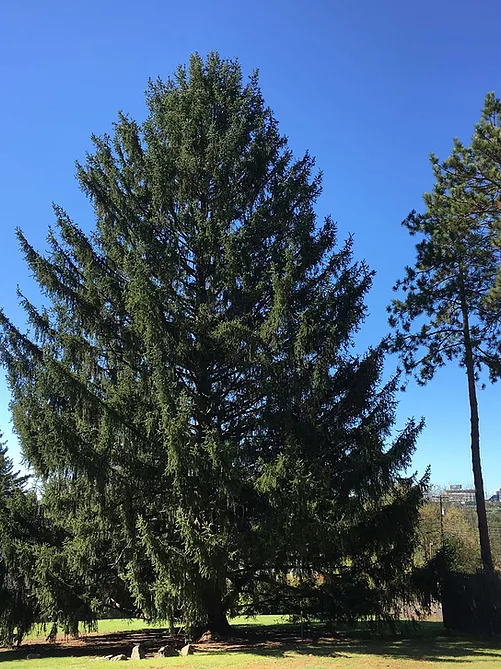Tree Topping
Note from our Forestry chair, Walt Sinnwell:
Many people have tall trees topped around their homes. A tree grows so tall you worry about branches striking your home or outbuildings. But what you may not realize is that a tall tree will always be a tall tree. That tree will put everything it has into regrowth. Both its branches and leafy growth extending as tall or taller than it was. This puts more strain on the entire tree, also causes wounds that are slow to heal exposing the tree to insect and disease damage. Think about planting lower species around your house and buildings. If you topped your tree once it will need it again in time.
Spotted Lanternfly
Courtesy of Commonwealth of PA website
What is it & why does it matter?
The Spotted Lanternfly or SLF, Lycorma delicatula (White), is an invasive planthopper native to Asia first discovered in PA in Berks County in 2014.
SLF feeds on sap from a myriad of plants but has a strong preference for plants important to PA's economy including grapevines, maples, black walnut, birch and willow. SLF's feeding damage stresses plants which can decrease their health and in some cases cause death.
It's not just our plants at risk, it's our economy.
The SLF can impact the viticulture (grape), fruit tree, plant nursery and timber industries, which contribute billions of dollars each year to PA's economy.
- A 2019 economic impact study estimates that, uncontrolled, this insect could cost the state $324 million annually and more than 2,800 jobs.
Pennsylvanian's Quality of Life can be impacted.
SLF excrete honeydew, a sugary waste that attracts bees, wasps and other insects and this waste builds up on any surface below the SLF. The build-up of waste also leads to the growth of sooty mold and black-colored fungi.
How to Stop the Spread of Spotted Lanternfly
Join the effort to control and prevent the spread of SLF.
- Learn how residents and businesses can comply with the SLF Quarantine Order.
- Any efforts you make in destroying the Spotted Lanternfly or its egg masses help reduce populations on your property and in your community. SLF can be controlled by a combination of:
- physical removal at any life stage
- removal of Tree-of-Heaven host trees
- pesticide applications
- If you are in a quarantine area, please "Look Before You Leave" as SLF can move easily
- Use the SLF checklist to complete inspections of vehicles, trailers, or any outdoor items before movement within or out of quarantine locations.
- Report SLF sightings:
- Online SLF Reporting
- 1-888-4BAD-FLY (1-888-422-3359)
The PA Dept. of Agriculture is working with the U.S. Department of Agriculture and Penn State University and Extension to control and contain SLF. Learn more about current research efforts and SLF program activities.

